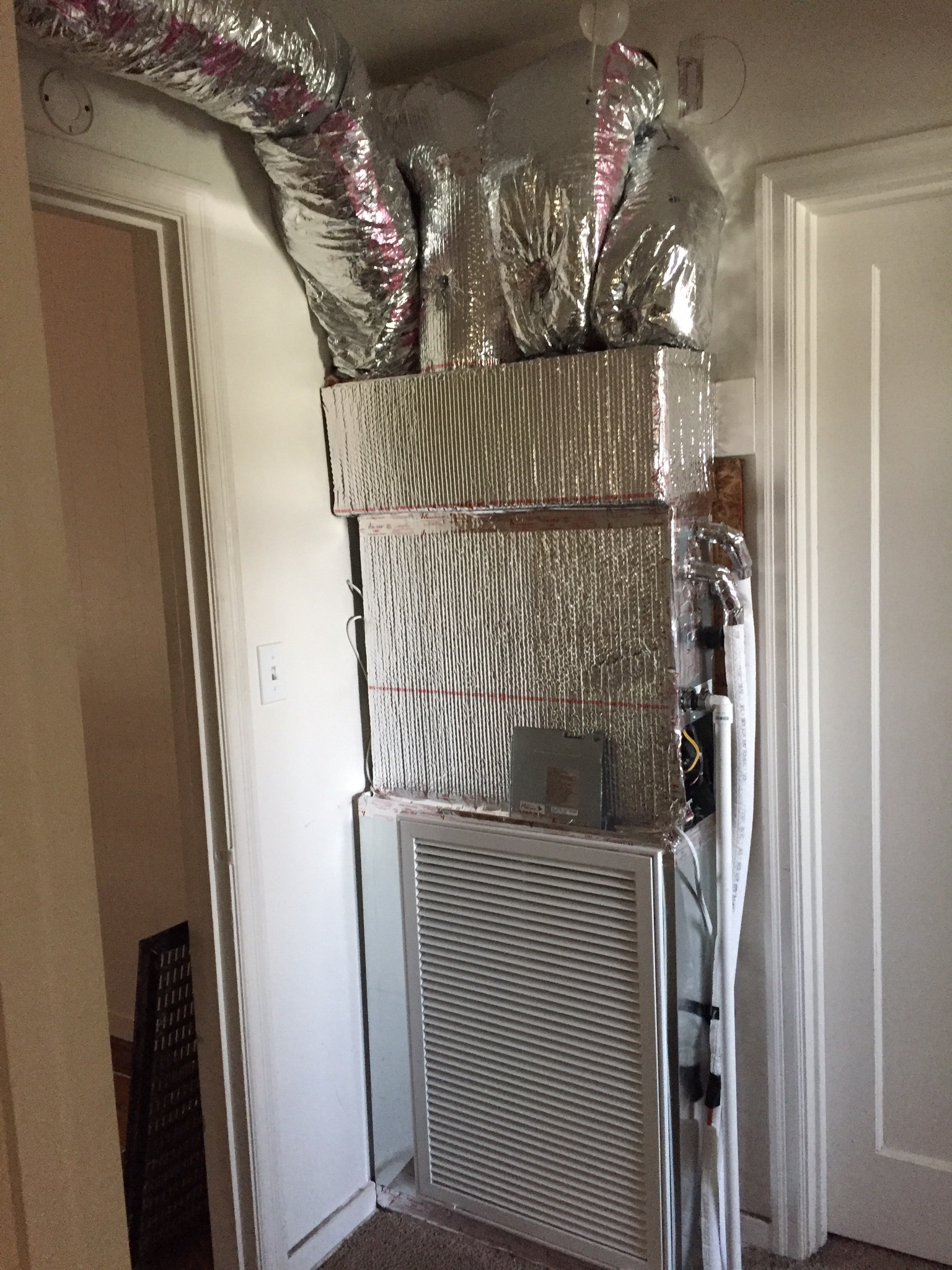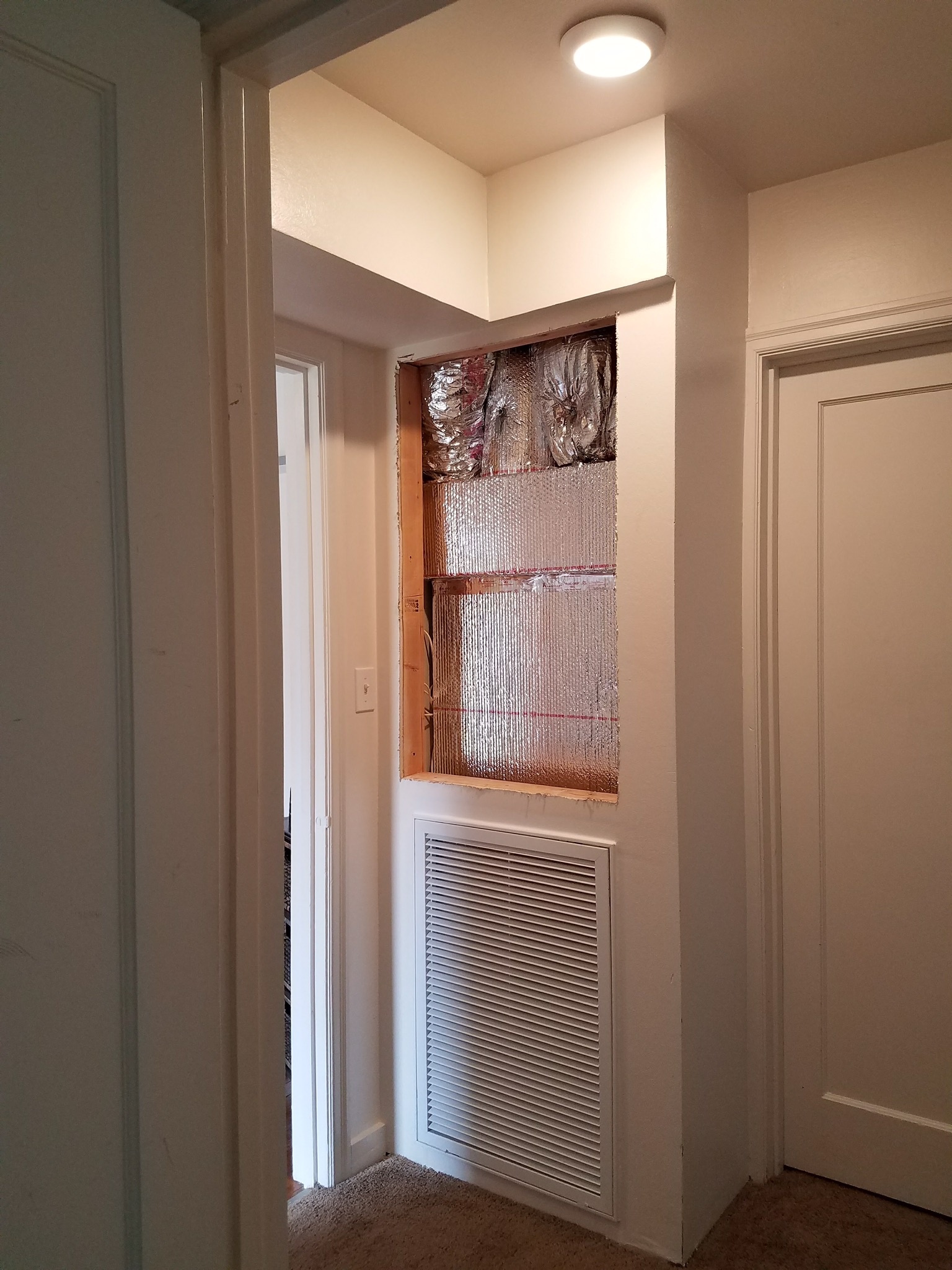Diyohmy
New Member
Hi, I have a 1500 square foot house. The setup is pretty simple, in the front we have two large rooms, one being and open-concept living room slash kitchen which is connected to a large family room by a 4-foot opening with no door. A hallway leads back to our 3 smallish bedrooms, all 10 x 10 to 10 x 12.
We had three HVAC companies give us bids. All three were quite nice and informative, but all three gave quite conflicting information as to the what's and why's of our potential best solution. Worth noting is that we went in thinking ductless.
Option one was a mini split in every room, 5 total. An issue with this one is that window placement on our master bedroom prevents install on an exterior wall.
Option 2 was a mini split in both large rooms, and a small ducted unit in our attic feeding three bedrooms.
The third guy liked option 2 but actually went left field with his recommendation. He recommended a traditional gas furnace and electric AC unit with ductwork in our attic. The furnace could go in our garage or attic, but my wife wouldn't want it in the garage. She's also concerned about putting gas into our attic for safety reasons, although neither of us know if that fear is warranted.
A friend of ours recently did option 2 but it's really too soon to have solid feedback. The third guy did a solid job of selling me on the merits of a traditional ducted system, even though he also does mini splits. Price-wise they are all similar enough not to take any off the table
I've been reading my share on the net trying to sort out these ideas, but most sites always seem a bit like propaganda for whatever they happen to sell. I've had great luck on this forum asking for advice before, and would love to hear any thoughts on the matter.
We had three HVAC companies give us bids. All three were quite nice and informative, but all three gave quite conflicting information as to the what's and why's of our potential best solution. Worth noting is that we went in thinking ductless.
Option one was a mini split in every room, 5 total. An issue with this one is that window placement on our master bedroom prevents install on an exterior wall.
Option 2 was a mini split in both large rooms, and a small ducted unit in our attic feeding three bedrooms.
The third guy liked option 2 but actually went left field with his recommendation. He recommended a traditional gas furnace and electric AC unit with ductwork in our attic. The furnace could go in our garage or attic, but my wife wouldn't want it in the garage. She's also concerned about putting gas into our attic for safety reasons, although neither of us know if that fear is warranted.
A friend of ours recently did option 2 but it's really too soon to have solid feedback. The third guy did a solid job of selling me on the merits of a traditional ducted system, even though he also does mini splits. Price-wise they are all similar enough not to take any off the table
I've been reading my share on the net trying to sort out these ideas, but most sites always seem a bit like propaganda for whatever they happen to sell. I've had great luck on this forum asking for advice before, and would love to hear any thoughts on the matter.


